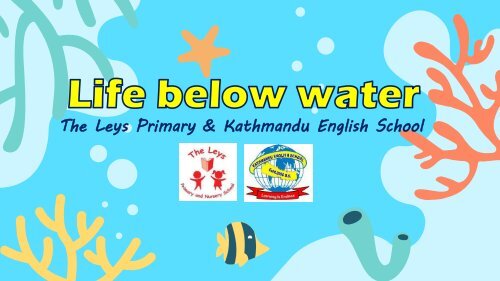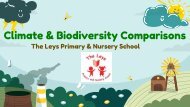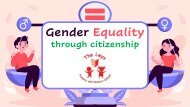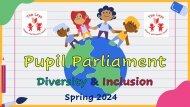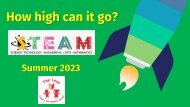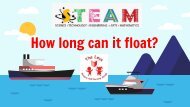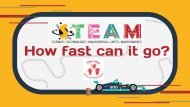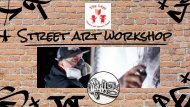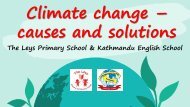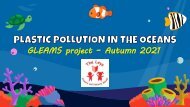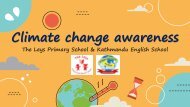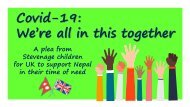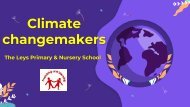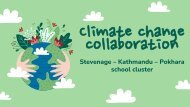Create successful ePaper yourself
Turn your PDF publications into a flip-book with our unique Google optimized e-Paper software.
The Leys Primary & Kathmandu English School
The issue of plastic pollution is now accepted to be a global issue.<br />
Entanglement and entrapment of marine wildlife; ingestion of plastic by<br />
marine animals; ocean currents causing enormous areas of ‘plastic soup’;<br />
microplastics and food chain contamination are all issues that urgently<br />
need to be tackled.<br />
This collaborative unit of work addressed this issue<br />
in a positive and optimistic way, focussing on the<br />
progress that has already been made in relation to<br />
Sustainable Development Goal #<strong>14</strong>: Life below water.<br />
Our students explored multiple issues relating to<br />
plastic pollution and learnt about solutions that<br />
exist to overcome it.
T<br />
1
T<br />
Students were given nine different activity cards and asked to<br />
rank them in the following way:
Students were asked to write down what they thought were the<br />
key words linked to the topic of plastic pollution in our oceans.<br />
They then used these to create ocean-themed word clouds.
Students were asked to choose one item and highlight<br />
its possible journey to ending up in the ocean.<br />
4
T
In 1992, a cargo ship in the<br />
North Pacific lost a shipping<br />
container on its way from<br />
China to the United States that<br />
spilled nearly 29,000 rubber<br />
ducks and other bath toys into<br />
the ocean.<br />
Students were asked to mark<br />
on a world map where the<br />
ducks left from; where the<br />
cargo container fell into the sea<br />
and where the ducks travelled<br />
to before being washed ashore.
Plastic has been found in all the world’s oceans.<br />
Once plastic has found its way into the sea, it is caught up in one<br />
of the Earth’s five major currents, or gyres, and travels vast<br />
distances to the centre of these great whirlpools.<br />
Gyres are formed by the Earth’s rotation<br />
and resulting predominant winds.<br />
The five gyres are found in<br />
the North and South Atlantic,<br />
North and South Pacific<br />
and Indian Ocean.<br />
Students were asked to locate the gyres<br />
on a world map.<br />
Click on image to start short film
Students drew a marine food web and highlighted the transfer<br />
of micro-plastics by drawing them inside each of the marine animals
Fish do not have time to build up their numbers and whole<br />
populations are being wiped out. This causes problems for the whole<br />
community of creatures and plants in that ecosystem, and the<br />
humans who depend on them for food and to make a living.
The following ‘big questions’ were posed to students:<br />
T<br />
2
Finally, our students looked at different ways that people are<br />
approaching the clean-up of the oceans using the four examples below:<br />
• Ocean Clean-Up (large-scale action)<br />
• Sea bins project (local action)<br />
• Plastiki (education)<br />
• Banning microbeads (prevention)
Click on image to start short film
Click on image to start short film
Click on image to start short film
Click on image to start short film
Students at The Leys were challenged to come up with a design of how<br />
to tackle the problem of gathering plastic pollution from our oceans.<br />
They drew their design (making it colourful and visually eye-catching),<br />
labelled the key parts and briefly explained what role each part plays.<br />
Click on image to see student designs
CREDITS: This presentation template was<br />
created by Slidesgo, including icons by Flaticon,<br />
and infographics & images by Freepik.


